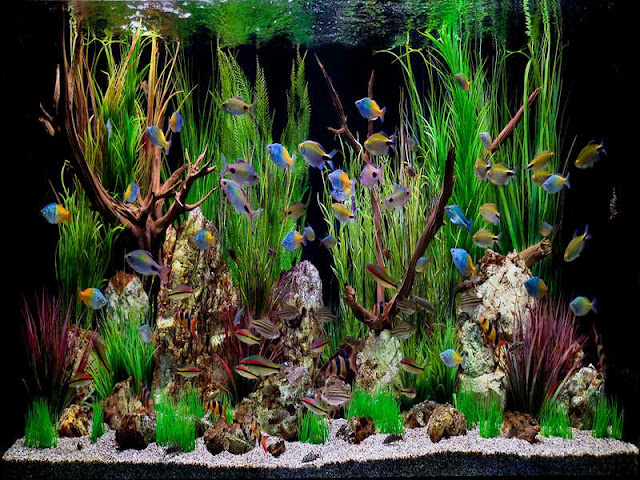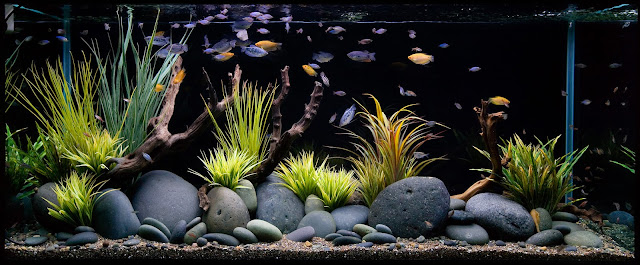Keeping
freshwater invertebrates in aquarium conditions. This article gives an overview of how to look after them and the choice available.
Freshwater invertebrates in an aquarium are the life forms that do not have an internal skeleton and commonly include shrimp and snails.
There are many shrimp species so here are a few popular ones:
Amano shrimp – Caridina multidentata
- Often said that it started the dwarf shrimp hobby in the United States .
- Most are very good algae eaters and usually about 1-2 inches in length.
- They are peaceful and best kept in groups but will be eaten by larger fish.
- Live for 2-3 years. Temperature 70-80ºF, ph 6.5 – 8.0. Not easy to breed.
Red Cherry Shrimp – Neocaridina heteropoda
- Will be ok with other dwarf shrimp that are also non-aggressive.
- Will eat algae and also fish food and soft vegetables.
- Live for 1-2 years and are very active and only hide after shedding their exoskeleton.
- Temperature 65 -85ºF, ph 6.5 – 8.0.
- Will breed if conditions are good.
- The female is much larger and more colorful.
Tiger Shrimp – Caridina sp.
- Are natural algae eaters and prefer slightly acidic conditions.
- Three color variations are available. Live for 1-2 years and are quite active.
- Temperature 68 -75ºF, ph 6.0 – 7.25.
- Can be kept with most other dwarf shrimp.
- If conditions are good breeding will take place.
- The female has a bit larger and wider tail section.
Bee Shrimp – Caridina cf. Cantonensis
- Many color varieties are available including a white one.
- They require slightly different requirements compared to the others above; softer water, lower temperature and more acidic conditions.
- Live for 1-2 years, are non-aggressive and quite active.
- Temperature 65 -72ºF, ph 5.8 – 6.80. Are algae eaters by nature but can also be fed food for bottom feeders.
- Fairly easy to breed but not easy to tell the differences between the sexes.
- The four shrimp species mentioned above are all compatible with each other.
Snails

- Apple snails are the largest freshwater snails and some species can reach up to 6 inches wide (Pomacea maculata) which would not be suitable for your aquarium.
- The most common one sold is the Pomacea bridgesii and is a good choice but it very important that this IS the species that you have bought as other snails can be voracious eaters of your plants and can quickly ruin your aquarium.
- The Pomacea bridgesii can be fed on fish food and be given some vegetables as well. One main characteristic of the apple snail is the tube like organ used to breathe whilst submerged. It must be able to do this or will drown. Another typical feature are the labial tentacles positioned on both sides of the mouth.
- If your snail lays its eggs above the water then it is an Apple Snail. Another common snail is the Marisa cornuarietis (Columbian ramshorn), which is smaller than the others mentioned above and have dark brown and yellow stripes.
- Snails don’t always mix well with fish so be warned. Certain barbs and tetras can pick on snails and injure them fatally. And dead snails can pollute an aquarium very quickly. Tropical water conditions are preferred to cold water.
As with all invertebrates it is important not to let copper get into the system. This can happen if certain medications are used.








Comments
Post a Comment